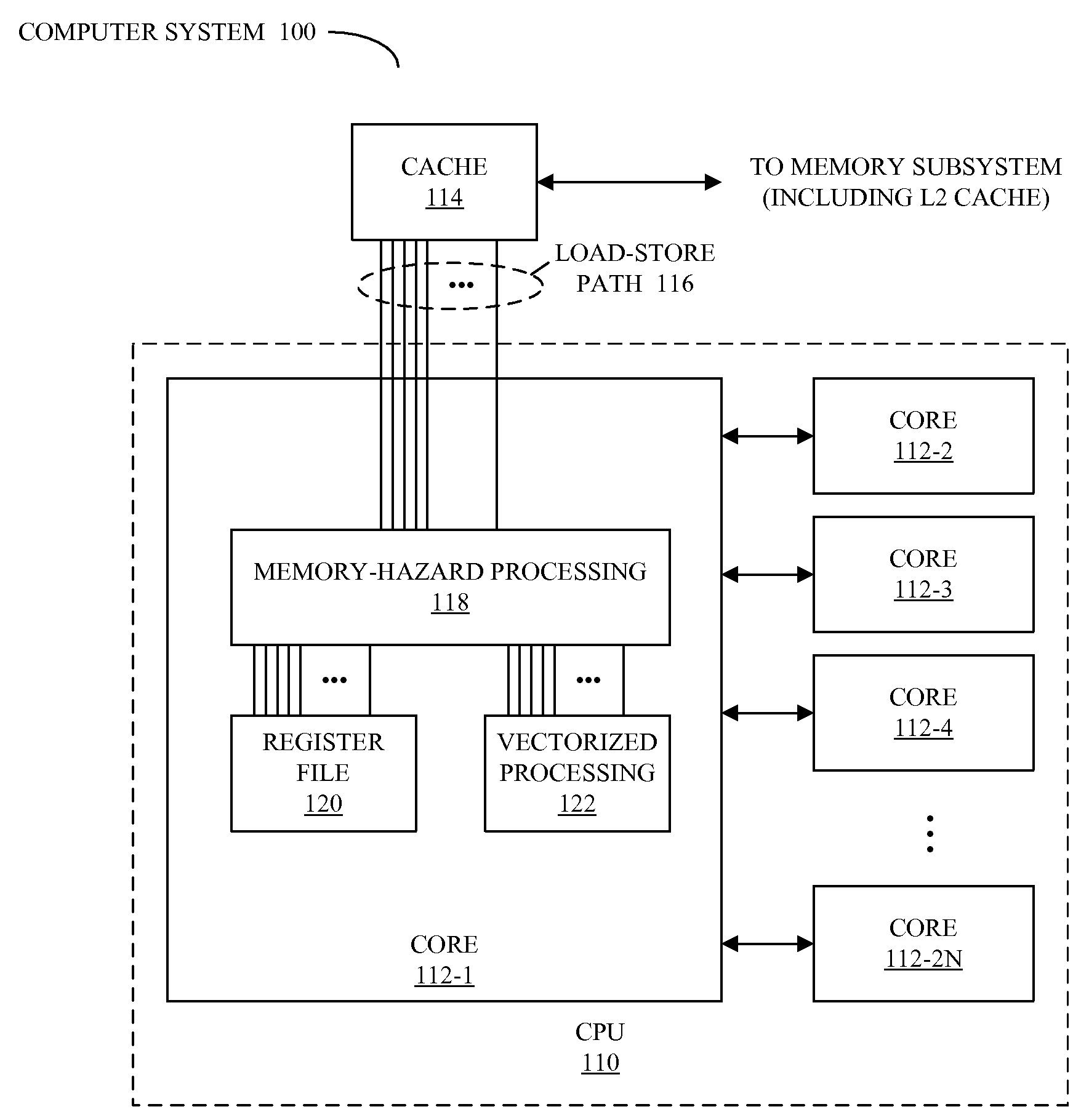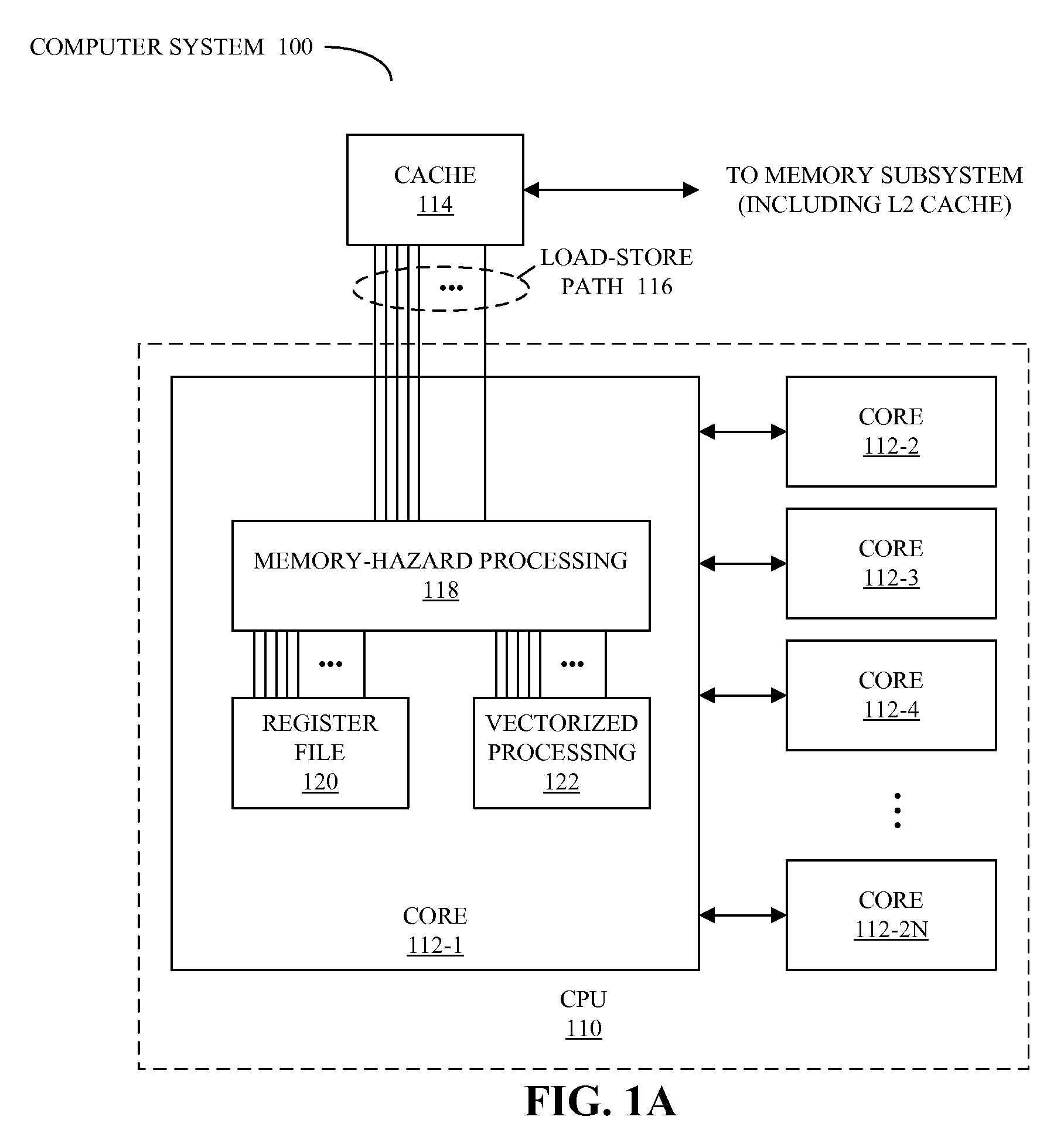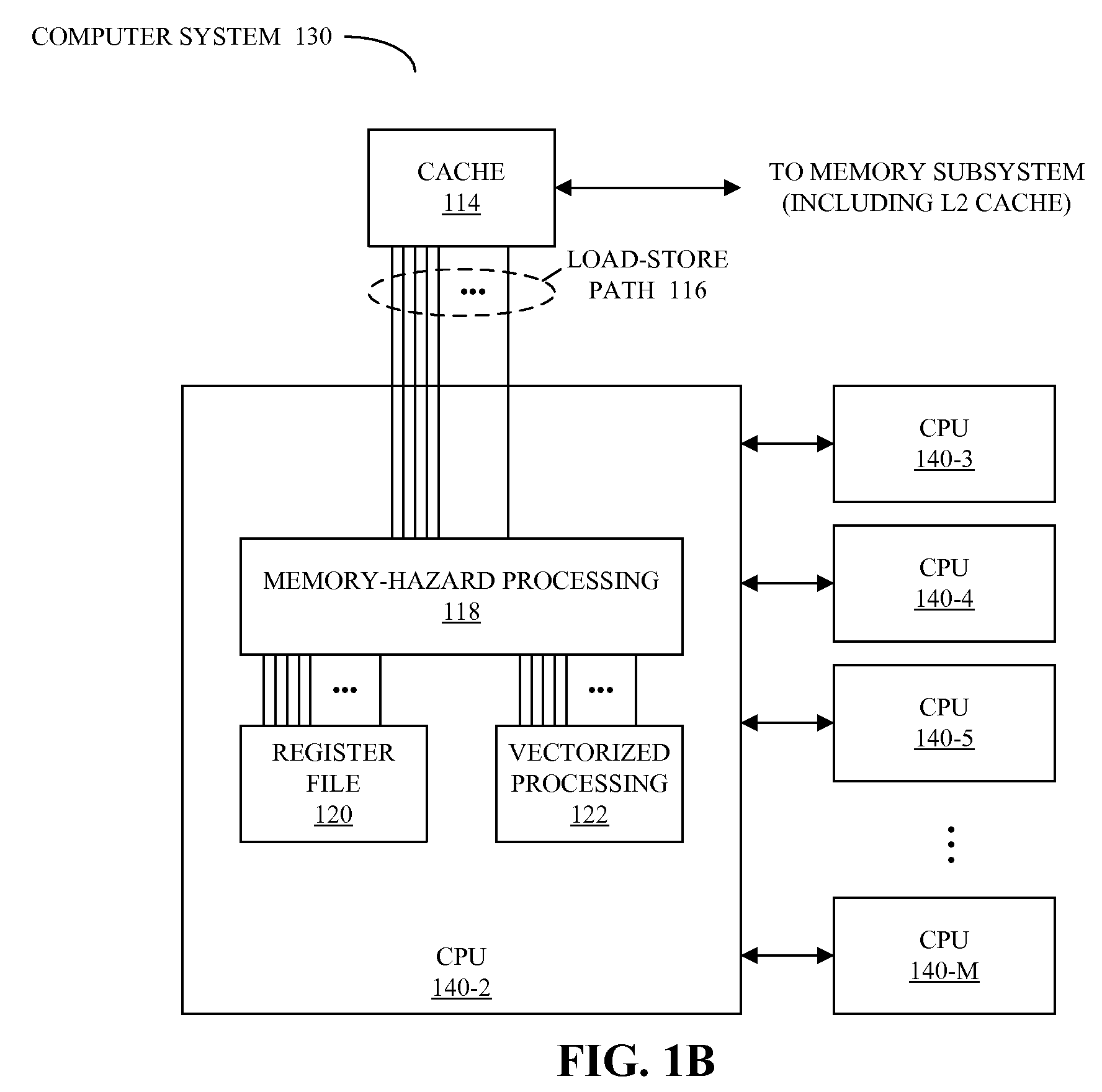Detecting memory-hazard conflicts during vector processing
a vector processing and memory-hazard technology, applied in the field of computer system performance improvement, can solve problems such as memory hazards, memory hazards, and restricting the use of many features available in modern high-performance processors
- Summary
- Abstract
- Description
- Claims
- Application Information
AI Technical Summary
Benefits of technology
Problems solved by technology
Method used
Image
Examples
Embodiment Construction
[0062]The following description is presented to enable any person skilled in the art to make and use the invention, and is provided in the context of a particular application and its requirements. Various modifications to the disclosed embodiments will be readily apparent to those skilled in the art, and the general principles defined herein may be applied to other embodiments and applications without departing from the spirit and scope of the present invention. Thus, the present invention is not limited to the embodiments shown, but is to be accorded the widest scope consistent with the claims.
[0063]Embodiments of a processor, a computer system, a compiler, and a technique that facilitate parallel or vector processing in the presence of memory hazards. In particular, these devices, systems, and / or techniques may be used to mitigate or cope with the effects of memory hazards (when present) in a variety of environments, including: data-level-parallelism (DLP) machines, autovectorizin...
PUM
 Login to View More
Login to View More Abstract
Description
Claims
Application Information
 Login to View More
Login to View More - R&D
- Intellectual Property
- Life Sciences
- Materials
- Tech Scout
- Unparalleled Data Quality
- Higher Quality Content
- 60% Fewer Hallucinations
Browse by: Latest US Patents, China's latest patents, Technical Efficacy Thesaurus, Application Domain, Technology Topic, Popular Technical Reports.
© 2025 PatSnap. All rights reserved.Legal|Privacy policy|Modern Slavery Act Transparency Statement|Sitemap|About US| Contact US: help@patsnap.com



